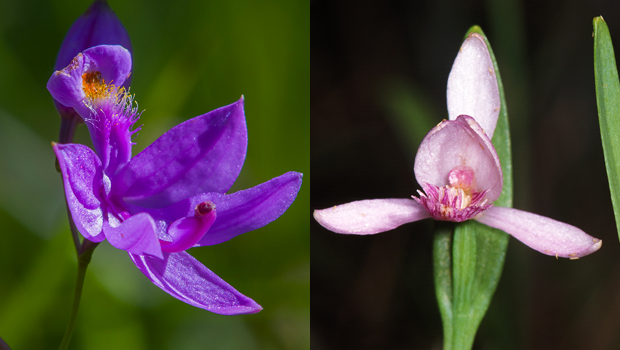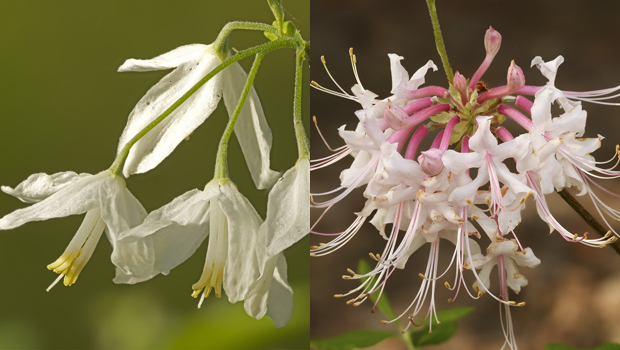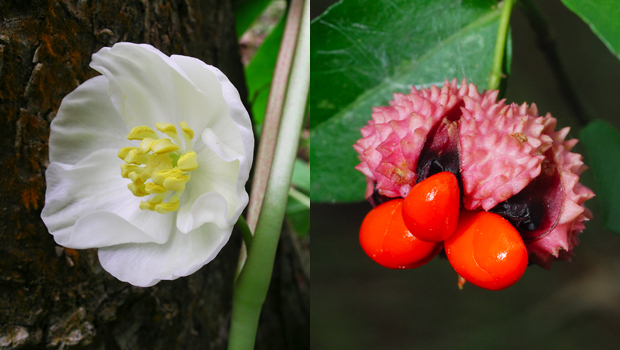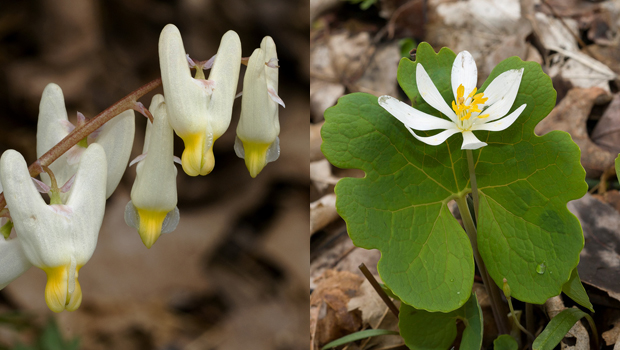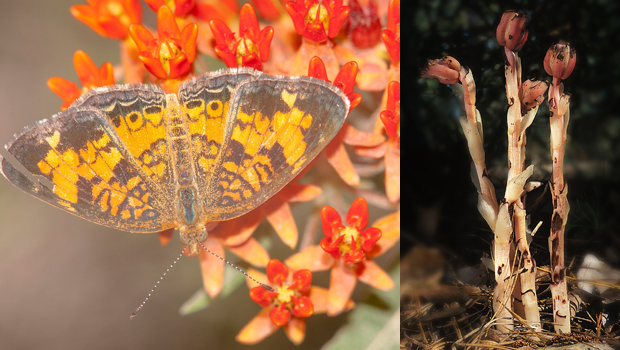Nature up close: Flowers of Tallulah Gorge
By contributing "Sunday Morning" nature videographer Judy Lehmberg:
Tallulah Gorge, in the northeast corner of Georgia, is almost 1,000 feet deep and about two miles long. It was formed when the Tallulah River cut through the primarily quartzite and schist 500-million-year-old Tallulah Dome. Today the gorge contains a number of waterfalls and has been protected by Georgia as a state park. Because the gorge is so deep it contains a large variety of habitats and thus many species of plants, including several species of uncommon to rare orchids. Some of those plants have been found to have medicinal value.
The medicinal properties of plants have been discovered over the ages as hunter-gatherers migrated into new areas. Discovering the chemical properties of compounds contained in plants has always been an experimental process. Women were usually the gatherers, and experimenters. When they found a plant not known to them, they assessed it by appearance, touch, smell and taste. Then perhaps they ate a little of it. If it was good, more was eaten the next day, until it was declared food. If a little of it cured some problem, such as intestinal worms, it was declared to have medicinal value. If it caused the experimenter to see flashing lights or visions, it was then used in religious rituals.
The following are a few of the prettier plants found in Tallulah Gorge as well as some used by Native Americans for medicinal purposes. Some of their components are still used today in modern medicine.
Grass pink orchid, Calopogron pulchellus, has no known ethnobotanic use. It is relatively widely distributed from Canada to Texas, and east to the Atlantic. It is an indicator species for good quality surface and ground water.
Snakemouth orchid, Pogonia ophioglossoides, is native, in the right habitat, from Canada to Texas and east to the Atlantic throughout all the Eastern states. This beautiful little orchid has a good fragrance, which is uncommon in orchids.
Silver bells, Halesia carolina, don't have any medicinal uses, but it is a beautiful bush and a welcome harbinger of spring.
Piedmont azalea, Rhododendron canescens, is a relatively common shrub in acidic soils in the southeastern United States. After looking at it, I can't imagine why anyone would prefer a domesticated azalea over this wild one.
May Apple, Podophyllum peltatum, contains podophyllotoxin, which has been used to treat testicular, uterine, lung and several other types of cancer, as well as warts and some parasitic worms. It is poisonous, so it should only be used under the direction of a doctor.
The American strawberry bush, Euonymus americanus, is also known as hearts-bustin'-with-love, one of my all-time favorite plant names. Humans should take the red seed color as a warning as they are a strong laxative and cause severe diarrhea. A tea can be made from the roots and used to treat painful urination and stomach aches.
The bark can be used as diuretic, expectorant, laxative and tonic. A tea made from the bark has been used to treat malaria.
Dutchman's breeches, Dicentra cucullaria, was used by Native Americans to treat syphilis and some skin ailments. It contains alkaloids, which depress the central nervous system and are therefore poisonous.
Blood root, Sanguinaria canadensis, contains bright red juice in the roots used as body dye by Native Americans. It contains sanguinarine and berberine, opium-like alkaloids, and was used to treat ulcers, ringworm, warts, polyps and even skin cancer.
Like many useful plants, it can be very toxic if taken internally in even moderate amounts.
Butterfly milkweed, Asclepias tuberosa, was used by Native Americans to treat lung problems. Milkweed is essential to the survival of Monarch butterflies, whose caterpillars eat it.
Indian pipe, Monotropa uniflora, is one of the few plants that have no chlorophyll. It is parasitic on certain fungi usually associated with beech trees. Native Americans used the juice as an eye medicine. Today herbalists use it as a painkiller.
Blue-eyed grass, Sisyrinchium sp., was used by the Cherokees who cooked it to aid in digestion and treat diarrhea.
Cardinal flower, Lobelia cardinalis, has been used to expel worms and treat fever sores, but is very toxic and can cause death.
Judy Lehmberg is a former college biology teacher who now shoots nature videos.
For more info:
- Judy Lehmberg (Official site)
- Judy Lehmberg's YouTube Channel
To watch extended "Sunday Morning" Nature videos click here!
